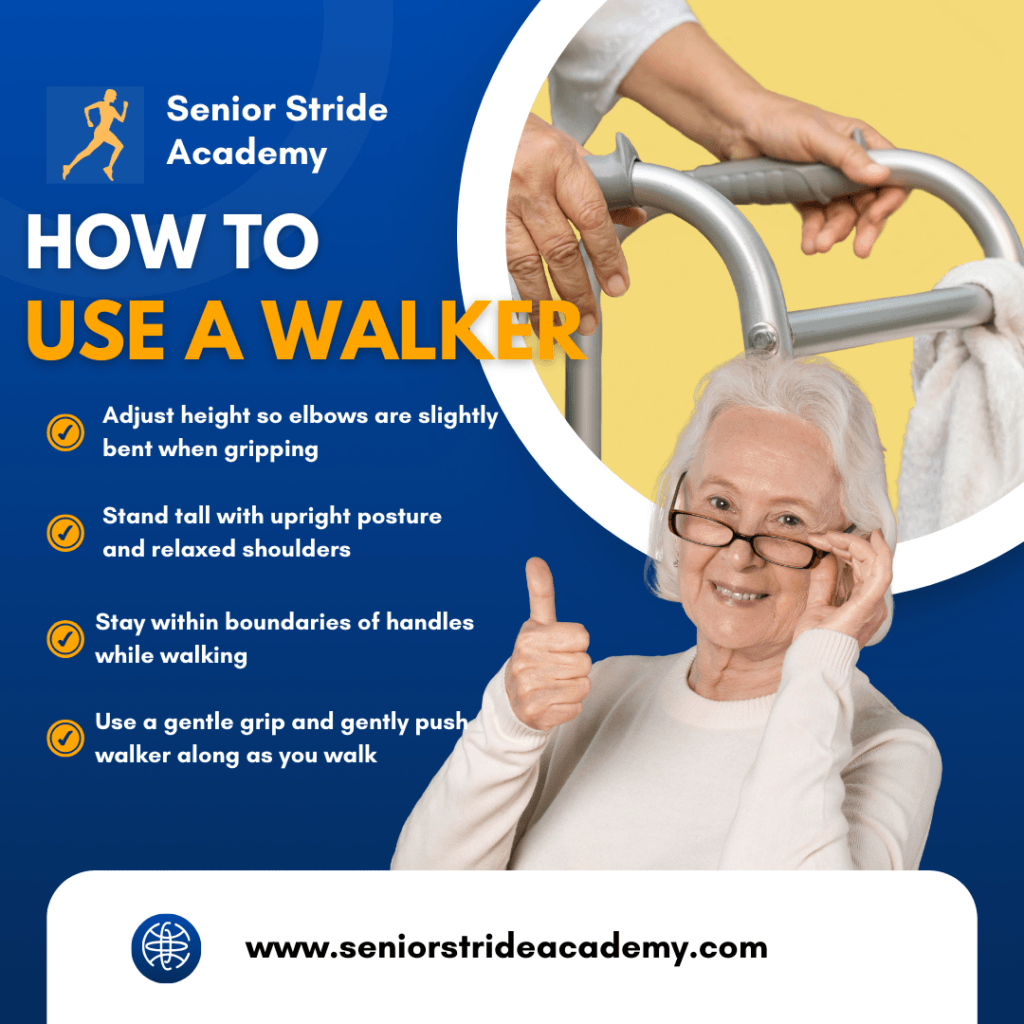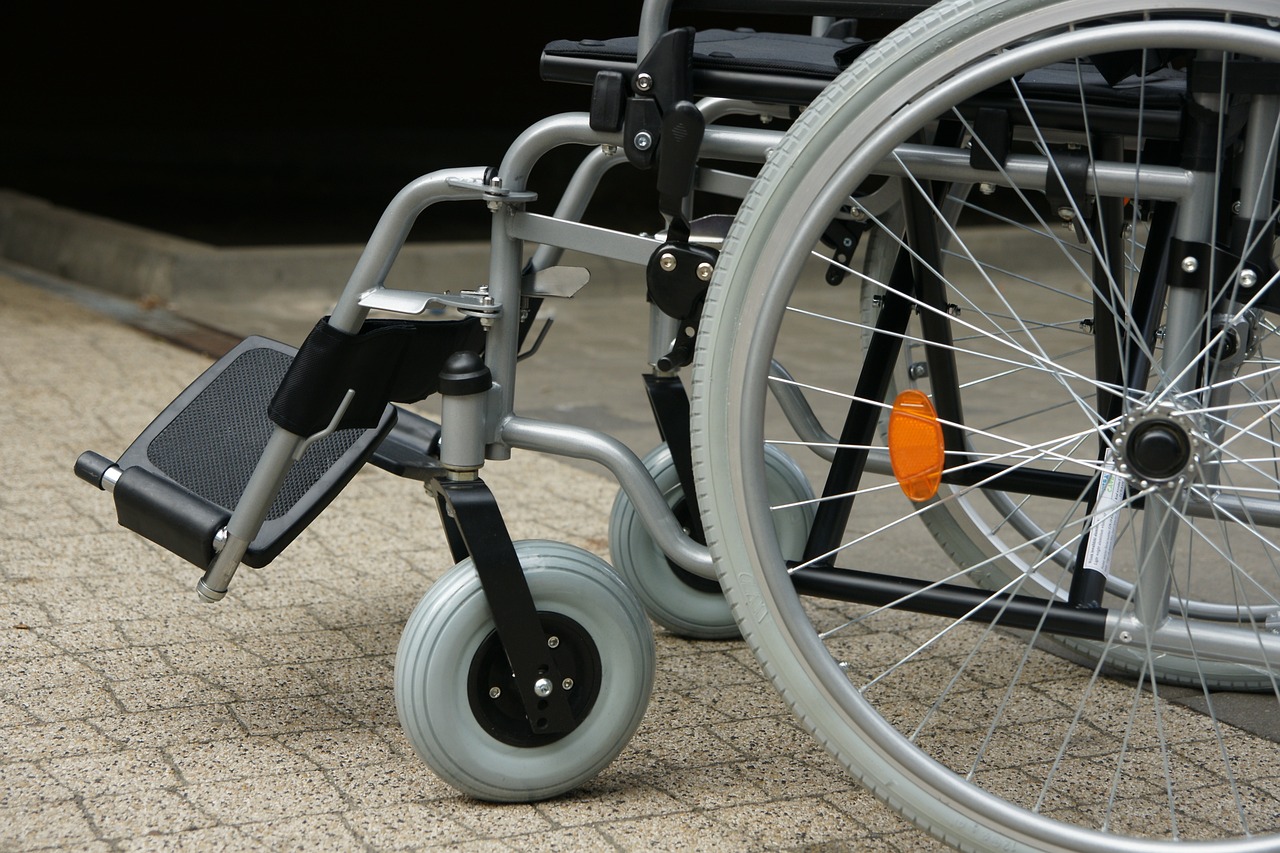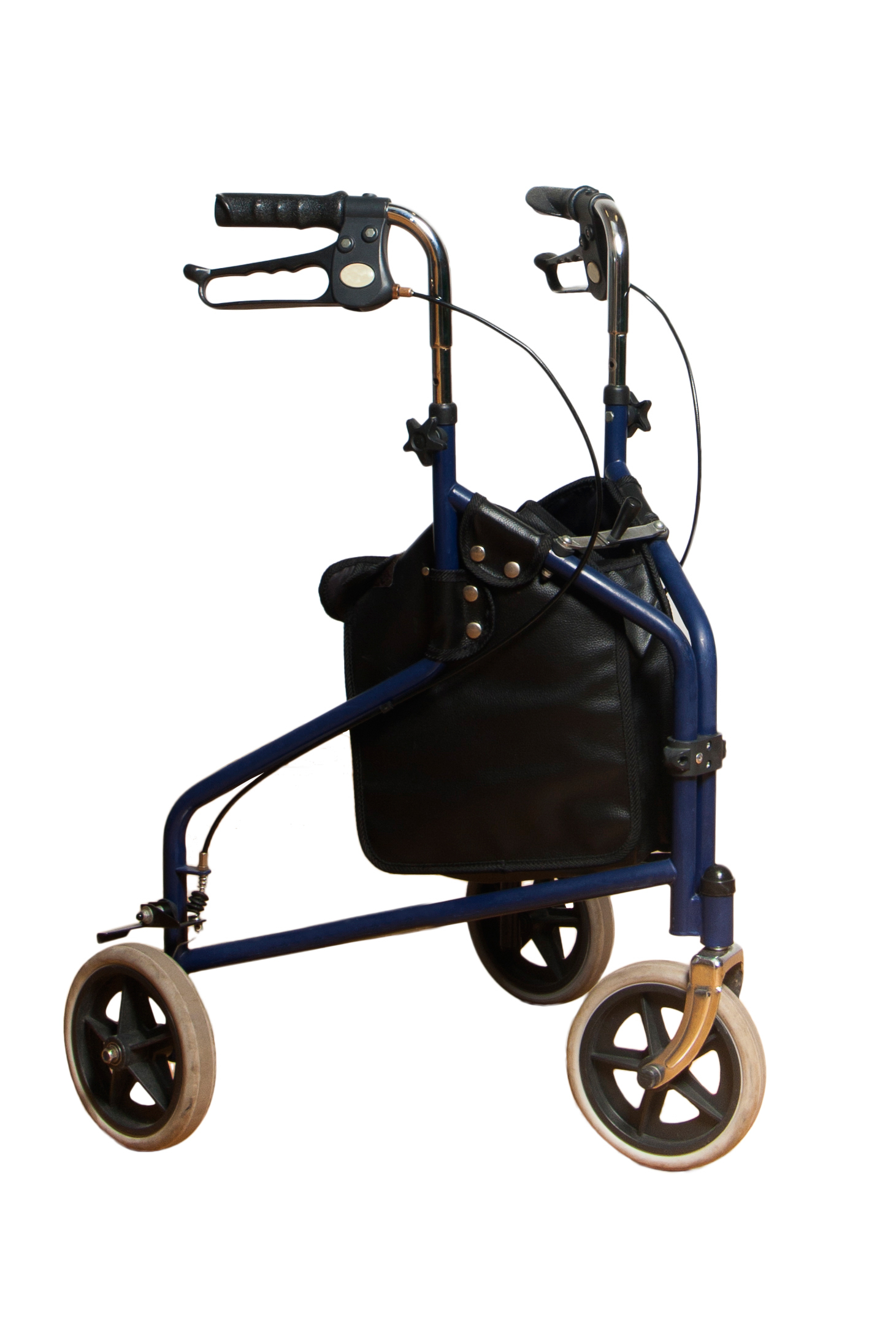Walkers can help prevent falls, reduce the strain on your legs, and allow you to move around more easily, but if used improperly, they can cause more harm than good.
Missteps or incorrect usage can lead to falls, injuries, or persistent pain.
In other words, all the stuff we’re trying to avoid.
So, it’s important to know how to use your walker correctly in order to get the most good from it.
Luckily, these adaptive devices aren’t that complicated – all it takes is a little know-how and some practice.
In this guide, I’ll go over how to properly adjust and use your walkers, including how to avoid the common mistakes often made.
After reading, you’ll be ready to master any kind of walker in no time.
A Quick Word on Walkers
There are several different types of walkers, each designed for specific needs, but one thing they all have in common is that they’re designed to make us safer on our feet.
The stability a walker can provide can reduce fall risk and make walking safer for seniors who would otherwise be at great risk.
That said, if they aren’t used correctly, they can actually increase our fall risk.
I see patients all the time that are frequently banging their walkers into obstacles or struggling to manage their walkers in cramped homes.
I’ve even seen patients trying to use walkers when going up and down stairs… trust me, not a great idea.
Many people think simply having a walker, regardless of how it’s used, automatically makes ’em safer, but I would disagree.
A walker only improves safety if it’s used correctly.
And correct use starts with setting your walker to the correct height.

1. Adjust Walker Height
Adjusting your walker to the correct height is a big part of using it correctly because it’ll greatly effect your posture during use.
Regardless of whether you’re using a standard walker, front wheel walker (FWW), or rollator, the appropriate height is determined the same way (upright walkers are a bit different).
And there are 2 easy ways to make sure your walker is at the right height:
- Wrist check – stand nice and tall inside your walker and relax your arms down by your side. The walker handles should hit at or just above the crease of your wrist on each side.
- Hip check– while standing in the walker as mentioned above, take note of where the walker handles land with regards to your hip. When adjusted correctly for most seniors, the walker handles should land right at the bony protuberance on the side of the hip (greater trochanter of the femur).
Regardless of which method you use, when you hold onto the walker handles, you should have only a slight bend in the elbows (~15 degrees or so).
This means your arms should be mostly straight and relaxed when standing inside your walker.
If your elbows are bent significantly more than 15 degrees or you feel you have to slump down to reach the handles, the walker is too high or low.
If you’d like to see an image of what correct walker height looks like, check out this article by the Mayo Clinic – they have some great visuals.
2. Check Posture
The goal is to be as tall and upright as possible when walking with a walker – and I can tell you from experience this is easier said than done.
The majority of my patients start with the best intentions, but gradually start leaning forward and pushing the walker away from them as they walk.
The way they put it, “the walker just tries to get away from me”.
And the farther away the walker gets, the more your posture suffers.
A flexed trunk posture is bad for our backs and can lead to pain and discomfort, but it also makes the walker less effective.
The closer the walker is to your body, the more stability it provides, so keeping it nice and close is paramount for optimal results.
Here are a few easy guidelines to make sure you’re keeping your posture in check when using a walker:
- Stand straight with shoulders back and try not to lean into the walker
- Stand inside the handlebars
- Keep shoulders low and relaxed (avoid hiking shoulders toward ears)
- Try to use a gentle grip on the handles

3. Time to Walk
If you’ve got your walker adjusted to the correct height and you’re keeping an eye on your posture, using your walker should be the easy part.
Simply push your walker along while trying to stay inside the handlebars (staying inside the bars is a great way to ensure you’re close enough to your walker and using proper posture).
If you’re using a walker with wheels (front wheel walker or rollator), you won’t have to worry about lifting the walker unless you encounter a threshold, curb, or other obstacle.
If you’re using a standard walker which has no wheels, you’ll have to lift the walker and place it down for each step.
In this case, you’ll put the walker a step ahead of you and simply step back into the walker.
The goal is to land all 4 feet down on the floor at the same time and try to avoid “galloping” the walker (this is where the back legs hit the floor and then the front legs land afterwards).
Using a standard walker is much slower, but they do provide more stability than a rolling walker.
Regardless, the height adjustment and posture points remain the same.
Additonal Walker Tips: Maximizing Safety and Comfort
Walkers are versatile and can be used on all kinds of surfaces, but there are a few other things to keep in mind to maximize your safety.
These include:
- Navigating different terrains can be tricky, so take it slow. On flat, even surfaces, make sure all four legs or wheels are in contact with the ground.
- For uneven or slippery surfaces like gravel or wet floors, it’s essential to go slower and ensure stability before each step. Avoid sudden movements, as these can lead to imbalance and potential falls.
- Navigating curbs and steps requires extra caution. When stepping up or down, use the walker for support, but don’t place it beyond your reach. Step up with your stronger leg first, bringing the weaker one to follow. When stepping down, lead with your weaker leg.
- Never try to use a walker on steps or staircases – it’s not a good idea.
- When using a rollator, always lock your brakes before sitting on it or standing from it.
- Try to keep walkways clear of obstacles to make sure you have enough room to fit your walker safely through your home.
- Always keep your walker with you until you reach your seat, don’t “park it” elsewhere and then walk to your seat unsupported.
Maintenance and Care
Walkers are pretty low maintenance, but like anything else, they can wear out over time.
But a little regular maintenance can keep your walker reliable and safe for a long time.
It’s a good idea to inspect your walker routinely – check for loose screws, worn-out grips, or any other signs of wear and tear. If something seems off, address it immediately to prevent small issues from turning into bigger problems.
Cleaning your walker is also key to avoiding any buildup of dirt or grime that can affect its performance.
Wipe it down with a damp cloth regularly, and pay special attention to the wheels or rubber tips. Keeping the wheels or tips clean ensures better traction and reduces the risk of slipping.
Proper storage goes a long way in maintaining your walker’s condition. When not in use, store it in a dry place to prevent rust or damage.
Avoid leaving it in places where it could be knocked over or where it might block pathways, as this could cause wear and tear or create hazards.
Sometimes professional maintenance is needed – if your walker feels unstable or isn’t functioning as smoothly as it should, take it to a professional for a thorough check-up (this includes rollator brakes that need to be tightened).
They can address issues you might not notice, ensuring your walker remains safe and effective for everyday use.
Common Mistakes When Using A Walker
Using a walker seems straightforward enough, but there are still plenty of things that can go wrong.
Luckily, most of these issues are easy fixes.
Here’s a quick rundown on the most common walker mistakes I see everyday:
- Keeping walker too far from body
- Having walker height too high
- Walking with shoulder blades elevated (hiked up toward ears)
- Not having clear walking pathways in home
- Parking walker before sitting down
- Gripping handles too hard when walking
If you think about it, having your walker at the proper height and maintaining good posture immediately fixes half these issues.
But again, it’s easy to fall into bad habits, especially when you’ve been using a walker for a long time.
Final Thoughts
Many people think using a walker is straightforward – just grab and go, right?
Not quite.
It’s crucial to learn the correct techniques to avoid discomfort or accidents and improper use often stems from overconfidence or a lack of proper guidance.
So taking the time to learn is key.
Integrating your walker into daily life activities involves some planning, but can make a big difference and is worth the effort.
Again, I encourage you to arrange your living space to be walker-friendly – this means clear pathways, remove loose rugs, and make sure your walker will fit everywhere you need to go.
And if nothing else, make sure you keep that walker close to you while walking.
If you’re still having a hard time using your walker or you’ve had some falls while using your walker, it may be a good idea to see a physical therapist for some guided training.
Anyway, I hope you found this guide helpful and hopefully I answered any questions or concerns you may’ve had about using a walker.
If you still have questions or comments, feel free to leave ’em below and I’ll get back to you shortly.



